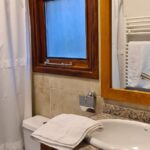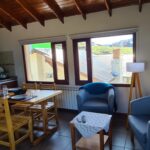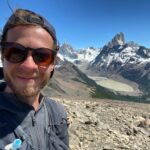Enjoy Patagonia in our apartments

Kuntur Chalten is located 20 meters from Antonio Rojo Avenue on Comandante Arrua Street 387. We are at the foot of the stairs leading to the upper floor of the village and 400 meters from Avda. San Martin. A strategic place that allows you to easily access all tourist sites, bars, restaurants, and supermarkets.
The complex is composed of an apartment on the upper floor with an exclusive balcony and two apartments on the ground floor on a gallery with views of the green space of the property.
Points of reference.
Trails:
500 meters The beginning of the path that leads to the Glacier and Torre Lagoon, DAgostini Camp, Maestri Lookout (detour to Madre e Hija Lagoon) 950 meters The start of the path that leads to Laguna de los Tres, Rio de las Vueltas Lookout, Capri Lagoon, Fitz Roy Lookout, Poicenot Camp, Detour to Madre e Hija Lagoon 1.1 kilometers The Los Glaciares National Park Visitor Center, the start of the path to Toro Lagoon, Lomo del Pliegue Tumbado, Condor Lookout and Agilas Lookout 800 meters The paredón lookout is 800 meters away.”
Apartment to accommodate
up to 4 people
Spacious and bright 1 bedroom apartment located on the upper floor
Spacious 45 sqm apartment, with internet connection via Wi-Fi. It has a bedroom with the option of a king size bed (1.90 by 2.00) and a twin or 3 twin beds (0.90 by 2.00). Heating by radiators (2 units). 2 large windows with blackout roller curtains that allow the environment to be completely darkened. High density foam rubber mattresses, intelligent pillows, and excellent quality bedding will allow you to achieve a very good sleep and thus regain strength to start the day renewed to live a new adventure.
Padded, sheets, Fundsa and blankets renewed for this season. Full bathroom consisting of a shower room (no bathtub) + toilet room with sink, large mirror, storage cabinet, toilet, hand bidet, liquid soap dispenser, hair dryer. Both bathroom rooms with towel radiators. New towels and bath sheets.
Kitchen and dining room: Fully equipped kitchen with filter coffee maker, electric kettle, toaster, microwave, electric stove with 2 burners, refrigerator with freezer, pot, pan, jug, boards, cutlery and complete crockery. Table and chairs for 4 people. In addition, it has a 40-inch smart TV (Direct Tv). Space with 2 armchairs, side table and floor lamp. Ideal for creating a reading or music atmosphere to relax, watch TV.
In this environment there is also an option of a twin bed. Which can also be designed to be used as a sofa bed to rest and/or watch TV.
It has 3 large windows with blackout curtains. Large balcony with 2 chairs and wooden table protected from rain and wind. All appliances refrigerator and crockery are brand new this season 2022/23. Integrated apartment to accommodate up to 2 people”.
Studio apartments that can accommodate up to 2 people
Spacious and comfortable 28 sqm studio apartment fully equipped with radiator heating. It has a fully equipped kitchen with a fridge with a freezer. Electric stove with 2 burners, microwave, coffee maker, toaster, electric kettle. Bed, option of 2 Twin or 1 double (King size). Single armchair. Table with stools. Internet connection. Smart TV with Direct Tv service. WI Fi. Bathroom with shower, hairdryer, towel radiator. Hand bidet. Toiletries. Large mirror. Outdoor gallery with exclusive rest area with chairs and small table. All furniture, linens and appliances are brand new for this season 2023.
Te esperamos en Kuntur para vivir la mejor experiencia patagónica.
Comandante Arrua 387
+54 9 3416 08-6139
info@kunturchalten.com.ar




















































